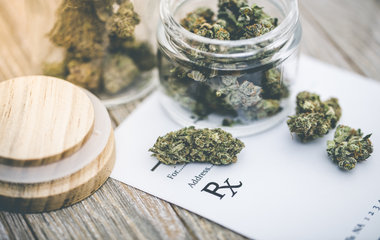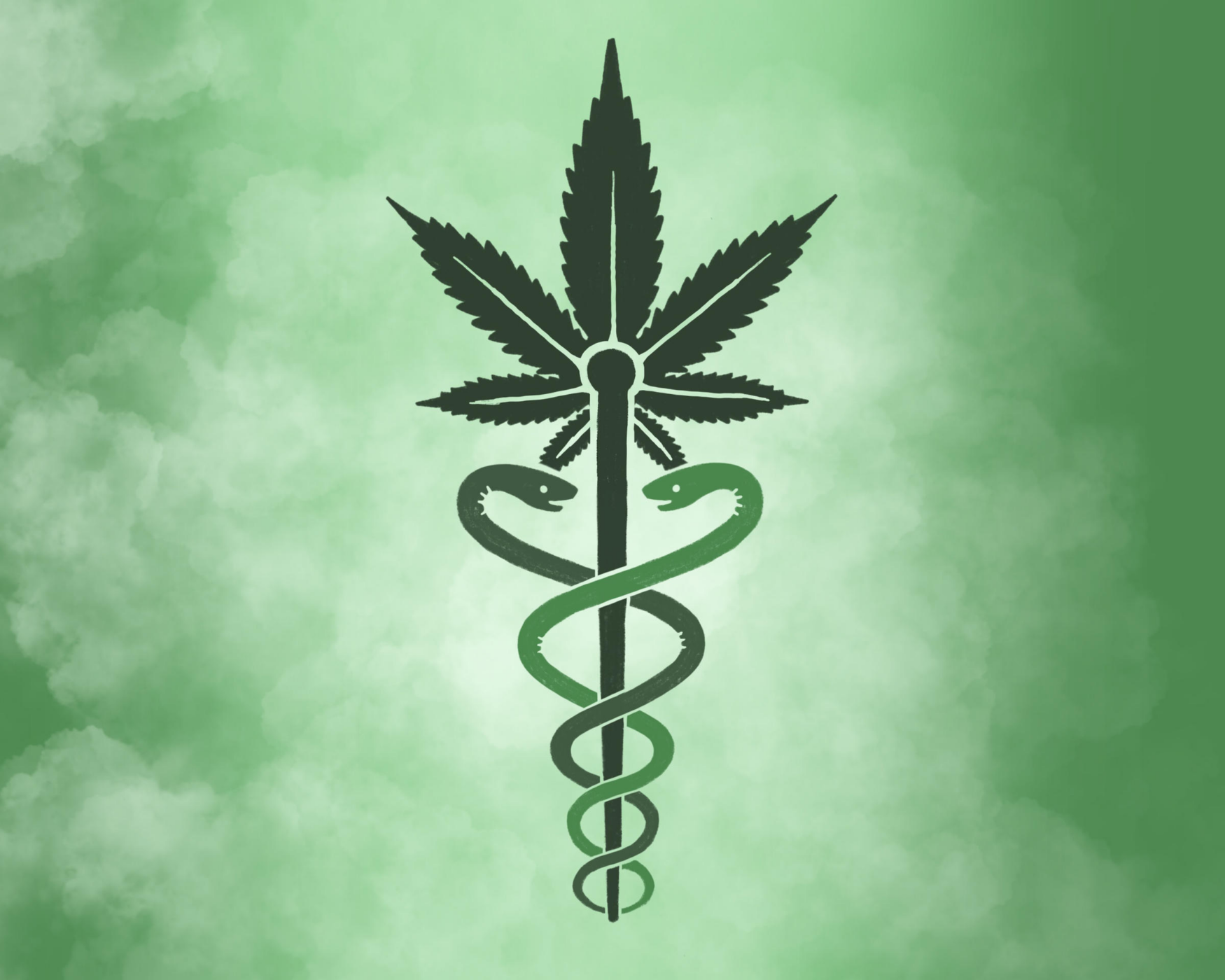How Medical Cannabis Is Changing Discomfort Monitoring Approaches in Medicine
Medical cannabis is reshaping how we come close to pain monitoring in medication today. Its special interaction with the body's endocannabinoid system uses new methods for relief, especially for persistent discomfort patients.
Comprehending Clinical Marijuana and Its Components
Medical marijuana is an effective device hurting management, thanks to its distinct parts. You'll find that it consists of various cannabinoids, like THC and CBD, which engage with your body's endocannabinoid system. THC, or tetrahydrocannabinol, is understood for its copyright results and can help in reducing discomfort assumption while promoting relaxation. On the other hand, CBD, or cannabidiol, offers pain relief without the high, making it an eye-catching alternative for those who prefer to avoid copyright results.
In addition to cannabinoids, terpenes play a significant duty in the therapeutic impacts of marijuana. These aromatic substances not only add to the plant's scent but also improve its pain-relieving residential or commercial properties. By understanding these parts, you can make informed decisions regarding making use of medical marijuana for pain management, tailoring your strategy to suit your particular demands and preferences. Eventually, this knowledge equips you to navigate your pain relief trip efficiently.

The Scientific research Behind Marijuana as a Pain Reliever
While many individuals look for alternative discomfort alleviation approaches, the scientific research behind marijuana reveals its performance as a natural analgesic. Marijuana has cannabinoids, such as THC and CBD, which interact with your body's endocannabinoid system. This system plays an essential duty in managing discomfort, inflammation, and mood. When you eat marijuana, these cannabinoids bind to receptors in your mind and immune system, aiding to modulate pain assumption.
Research shows that cannabis can lower persistent pain, making it specifically helpful for conditions like joint inflammation, fibromyalgia, and neuropathic pain. In addition, the anti-inflammatory homes of CBD can minimize discomfort without the copyright impacts connected with THC. This dual activity makes cannabis a flexible option for several pain management techniques. By recognizing these systems, you can appreciate exactly how marijuana not just alters the pain response however likewise improves your total well-being, providing a holistic technique to discomfort relief.
Contrasting Cannabis With Conventional Pain Monitoring Options
When considering discomfort relief, you may question exactly how marijuana stacks up versus typical options like nsaids or opioids. While cannabis has actually revealed encouraging efficiency in taking care of discomfort, it's necessary to consider its advantages versus possible side impacts. Allow's discover how these 2 strategies contrast in your discomfort management trip.
Effectiveness of Marijuana
Exactly how does cannabis stack up against standard discomfort management choices? Many individuals locate marijuana to be efficient in alleviating chronic pain, frequently citing its ability to minimize discomfort without the requirement for opioids. Research study shows that cannabis can target certain discomfort pathways, providing alleviation for conditions like joint inflammation and neuropathy. Unlike standard medications, which might include a lengthy checklist of negative effects and dependence concerns, marijuana provides a different method that some people like. You might see that while opioids can boring discomfort, marijuana tends to enhance your overall experience by boosting state of mind and sleep. This diverse result makes marijuana an appealing choice for many, especially those looking for a much more all-natural remedy in their pain management journey.
Adverse Effects Comparison
Although standard pain administration options like opioids and nonsteroidal anti-inflammatory medications (NSAIDs) are widely utilized, they usually feature a series of side effects that can affect your lifestyle. Opioids can cause queasiness, dependency, and bowel irregularity, while NSAIDs may trigger cardiovascular threats and stomach issues. On the other hand, medical marijuana often tends to have a different side impact profile. While you may experience dry mouth, wooziness, or tiredness, these impacts are normally less extreme than those connected with opioids. Many customers report that marijuana supplies effective discomfort alleviation without the threat of dependency. By contrasting these options, you can make a more informed choice concerning your pain management approach, weighing the benefits and downsides of each technique (Kentucky Medical Marijuana Doctor).
Client Experiences: Success Stories and Reviews
Many people like you have located alleviation via clinical marijuana, sharing inspiring stories of their recovery journeys. These testimonials highlight not simply pain relief, yet an improvement in their general high quality of life. You have actually obtained the opportunity to check out these powerful experiences and see just how cannabis could match your own discomfort administration strategy.
Individual Healing Trips
As individuals seek remedy for persistent discomfort, plenty of recovery trips highlight the transformative power of medical cannabis. You could find inspiration in the tales of people that once struggled with crippling pain however uncovered a new path to wellness. For some, a straightforward adjustment in their therapy strategy resulted in significant decreases in pain degrees, allowing them to redeem their lives. You might read about those that have actually switched traditional painkillers for cannabis, experiencing less adverse effects while taking pleasure in enhanced performance. These testimonies usually emphasize the emotional and emotional benefits also, showcasing just how cannabis can cultivate hope and strength. Your trip could mirror their own, full of opportunities and renewed toughness as you discover the healing potential of clinical marijuana.
Transformative Pain Alleviation
The tales of people locating alleviation through medical marijuana show its prospective for transformative pain alleviation. You might learn through somebody that battled with chronic back discomfort for many years, just to uncover that a certain pressure of cannabis substantially decreased their pain. An additional person might share just how, after fighting migraine headaches, they found that a cannabis-infused oil not just relieved their pain yet improved their total quality of life. These endorsements highlight a typical motif: the ability to redeem everyday tasks as soon as prevented by pain. Patients commonly report fewer side results compared to standard medicines, resulting in a newly found sense of flexibility. As these experiences spread, extra individuals are exploring medical cannabis as a sensible choice for managing their pain properly.
Lawful Landscape and Ease Of Access of Medical Marijuana
While navigating the evolving landscape of clinical cannabis can be difficult, understanding the lawful frameworks and ease of access options is crucial for individuals looking for alleviation. Legislations differ substantially from one state to another, so it's important to acquaint yourself with your neighborhood guidelines. Some states have actually legislated clinical marijuana totally, while others may still enforce constraints or otherwise enable it in all.
To gain access to medical marijuana, you usually require a referral from a licensed healthcare company, highlighting the importance of finding a doctor well-informed concerning marijuana treatments. Once you acquire a suggestion, you can request a clinical marijuana card, which provides you access to dispensaries.
Maintain in mind that also in states where cannabis is lawful, there may be constraints on the sort of items readily available, as well as amount restrictions. Remaining notified regarding these laws can empower you to make the most of the advantages medical marijuana has to provide.
Difficulties and Considerations in Integrating Cannabis Into Treatment

In addition, there's the concern of potential adverse effects, which can range from mild to serious. You'll likewise deal with the stigma surrounding cannabis usage, both from healthcare providers and clients, which could prevent open discussions about treatment alternatives. Continuous study is required to understand the long-term effects and efficacy of cannabis in pain administration. These click here to read factors to consider stress the demand for healthcare professionals to remain educated and approach cannabis integration thoughtfully.
The Future of Discomfort Management: Forecasts and trends
As medical care remains to evolve, pain monitoring is readied to undergo substantial changes that could reshape therapy techniques. You'll likely see a change towards more personalized medicine, where treatments are customized to your special hereditary makeup and particular discomfort problems. Medical cannabis is anticipated to play a vital duty in this evolution, supplying much safer choices to opioids and minimizing reliance on traditional painkillers.
Telemedicine will also end up being extra prevalent, enabling you to speak with specialists from the convenience of your home. This benefit can boost access to pain management sources and support. Additionally, improvements in technology, such as wearable tools, will certainly make it possible for real-time tracking of pain levels, encouraging you to handle your problem a lot more successfully.
As study proceeds to confirm the benefits of clinical marijuana, you can expect a lot more healthcare providers accepting these treatments, eventually resulting in enhanced outcomes and high quality of life.
Regularly Asked Questions
What Are the Possible Negative Effects of Clinical Cannabis for Pain Management?
When using medical marijuana for pain management, you could experience adverse effects like wooziness, dry mouth, fatigue, or adjustments in hunger. It is very important to monitor how your body reacts and consult your health care supplier if needed.
How Is Dosage Determined for Medical Marijuana hurting Therapy?
When establishing dose for medical marijuana, you consider variables like your weight, pain severity, and specific resistance. It is anonymous essential to begin reduced and slowly increase up until you locate the most effective dose for your needs.

Can Medical Cannabis Interact With Various Other Medicines?
Yes, clinical cannabis can interact with various other drugs. It's important to discuss your present prescriptions with your doctor to prevent possible negative effects or decreased efficiency of your treatments while making use of cannabis.
Is Medical Marijuana Effective for All Types of Discomfort?
Clinical marijuana isn't efficient for all sorts of discomfort. It might assist with chronic pain, but actions differ. If it's appropriate for your details problem., you should consult a health care expert to figure out. Kentucky Medical Marijuana Doctor.
What Are the Costs Connected With Medical Cannabis Therapy?
When taking into consideration clinical cannabis treatment, you'll locate expenses differ extensively. Expenditures consist of consultations, item costs, and possible insurance policy protection. It's vital to research study and spending plan as necessary for a comprehensive understanding of your monetary dedication.
Medical cannabis is reshaping how we approach pain management in medication today. By recognizing these elements, you can make informed choices concerning utilizing clinical cannabis for pain monitoring, tailoring your approach to fit your specific demands and preferences.Research study reveals that marijuana can decrease chronic discomfort, making it particularly beneficial for conditions like arthritis, fibromyalgia, and neuropathic pain. By understanding these systems, you can appreciate just how cannabis not only alters the pain response but likewise boosts your overall well-being, providing an alternative approach to pain alleviation.
What Are the Prospective Side Impacts of Medical Marijuana for Discomfort Administration?